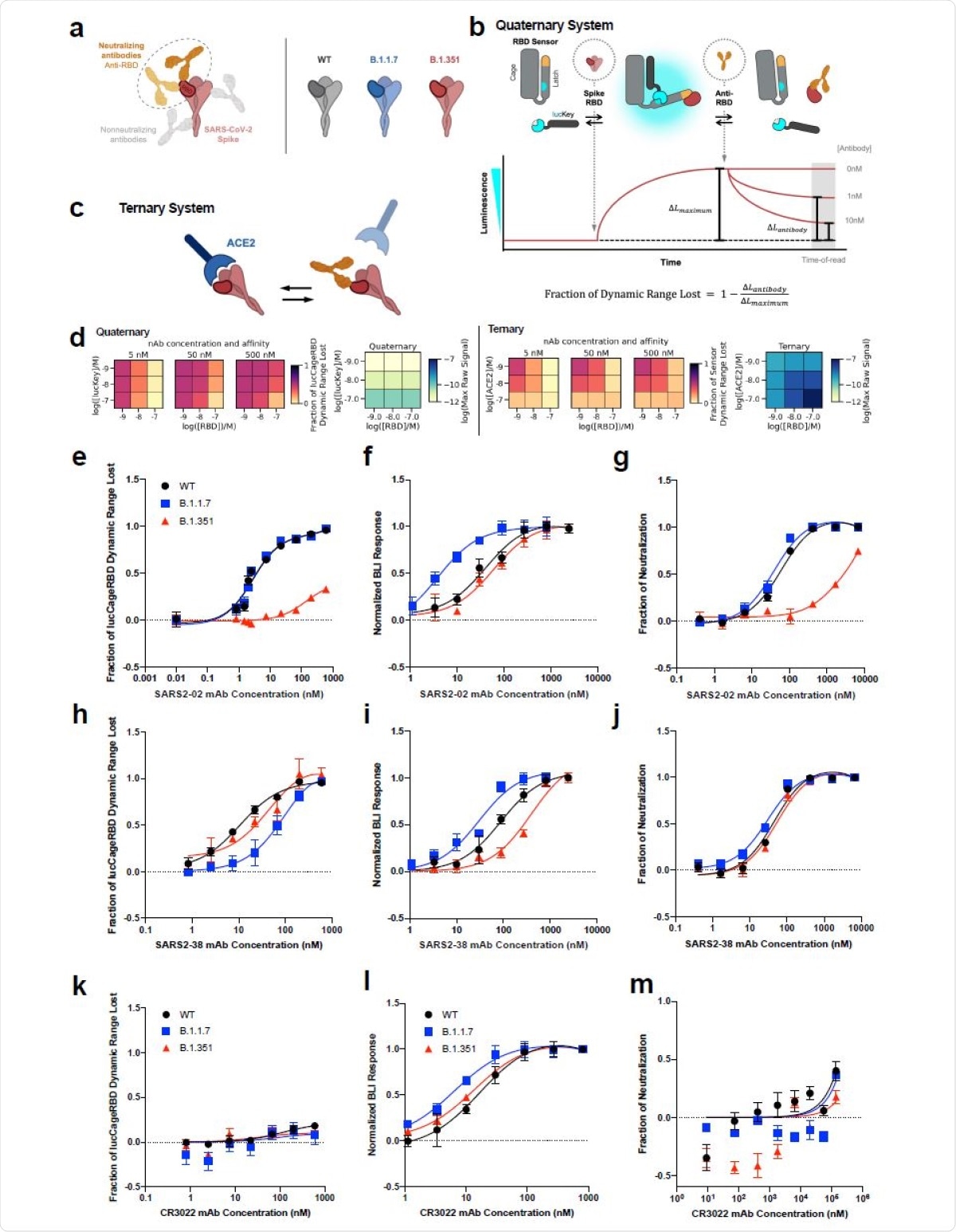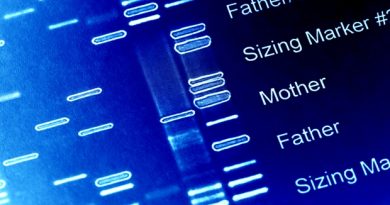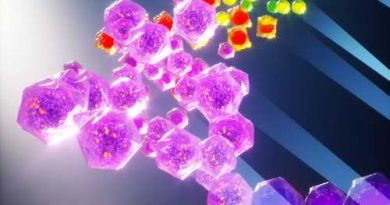Novel biosensor offers rapid quantitative variant of concern-independent serology for SARS-CoV-2
Even as herculean efforts are being made to extend the reach of vaccination against COVID-19 to all the regions of the world, there is a dire need for rapid and sensitive tests to assess the antibody response to the various vaccines used and to monitor antibody titers over time.
A new preprint, available on the bioRxiv* server, describes a new approach to this problem which could be applied to other molecules of interest as well, both in laboratories and at the point of care.
-2.jpg)
This knowledge will help to guide the degree of freedom in social interactions that the vaccinated individual has, as well as to determine what type of treatment is necessary in cases of breakthrough infection. Moreover, it will help evaluate how effective each vaccine is, as well as offering insights into therapeutic antibody use, especially against the emerging variants of concern (VOCs).
Background
The SARS-CoV-2 spike protein binds to the angiotensin-converting enzyme 2 (ACE2) of the host cell via the receptor-binding domain (RBD) of the former. This is the immunodominant target of neutralizing antibodies formed against the vaccine spike or wildtype virus spike.
However, spike mutations have defined multiple VOCs, especially in the RBD, altering the recognition of these epitopes by neutralizing antibodies to the wildtype virus. Thus, these mutations allow the virus to escape neutralization. To deal with this situation, it is essential to have accurate and sensitive serological tests that could, ideally, be done at home, following either natural infection or vaccination.
While antibody assays that measure both the titer and the neutralizing capacity are available at present, they require a laboratory setting because of their complex protocols and equipment requirements. Neutralization tests can be carried out only in live virus assays involving either pseudoviruses or authentic viruses. The use of the latter is restricted to biosafety level 3 (BSL3) facilities.
Lateral flow antigen tests have been developed to meet this need, but they can only report whether the binding activity is present between the antibody and the antigen, leaving neutralizing capacity unresolved. Moreover, they do not report quantitatively.
Newer cell-free tools also measure antibody titer, but again, neutralization is not identified. At present, therefore, there is no way to measure the neutralization activity of antibodies against the VOCs.
What was the aim of the study?
In this study, the scientists from the University of Washington in Seattle, and the Washington University School of Medicine in Missouri, developed a novel sensor that could measure neutralizing antibody responses to the wildtype SARS-CoV-2 as well as VOCs, in a convenient format, and with the ability to provide rapid results within half an hour.
In contrast, currently available enzyme-linked immunosorbent assay (ELISA) assays, which provide both the antibody titer only after 6 hours but take several days to cell-based neutralizing capacity.
Sensor principles
The approach they used was to identify and measure only antibodies that disrupt virus RBD-ACE2 binding as a surrogate measure for antibody neutralization. The biosensor they came up with comprises a lucCageRBD protein. This sensor can switch between closed or open states.
The lucCageRBD has a cage domain. In the closed state, when the RBD is absent, the lucCageRBD protein cage domain attaches to the latch domain containing the LCB1 protein. This prevents the activation of luciferase, and hence luminescence. This is the dark state of the protein.
When the RBD is present, the LCB1 protein binds at picomolar concentrations to the RBD, indicating a very high affinity. Another protein, called the lucKey protein, binds to the sensor in the open state, inducing luciferase activity – the luminescent state. These events are driven by the free energy of binding.
This biosensor is therefore capable of identifying antibodies directed to the RBD, since these molecules competitively inhibit LCB1 binding at or near the ACE2-binding interface. Since the presence of antibodies leads to dissociation of the RBD from the LCB1 protein, this switches the sensor towards the dark or closed state, as luciferase is not reconstituted.

Multiple advantages of the sensor
This is described as a reversible quaternary biosensor. It detects antibodies to free unlabeled RBD in solution, rather than the RBD-ACE2 complex detected in other competitive inhibition assays. As a result, RBD VOCs can be detected just as easily as the wildtype.
When an assay detects neutralizing antibodies via their direct competition with ACE2 for ACE2-RBD complex formation, it is difficult to distinguish more potent but less abundant antibodies from those present at higher titers but with less binding affinity, since the overall level of competition is similar for both.
Conversely, the biosensor described here simply picks up the presence of neutralizing antibodies via their competition with the high-affinity LCB1 protein for RBD binding. By changing the concentrations of either protein, this quaternary sensor system can be made more sensitive to the concentration and binding affinity of the antibodies.
The latch and key proteins can both be modified to achieve the optimal affinities required for the cage in order to capture the largest range of antibody affinities and titers, without mutating the RBD-ACE2 interface as required for ternary systems.
Moreover, this offers quantitative measurements of both antibody binding affinity and titer, thus providing a way to assess if vaccination has succeeded in generating immunity.
In addition, the peak sensor responses in the closed state (no antibody) and open state are similar, due to the unchanging concentration of the lucCageRBD protein and the use of unlabeled RBD. In ternary systems, significant variation occurs as the substrate is depleted, and also the instrument cannot detect the signal below a limit.
This shortcoming can be remedied by using fixed amounts of one component, but this further compounds the difficulty in distinguishing between antibodies with high affinity/low concentration and low affinity/high concentration.
How was the system tested?
The researchers found that when tested over a range of five monoclonal antibodies (mAbs) directed against different spike variants (wildtype, B.1.1.7, and B.1.351), the level of activation of the sensor, rather than spike binding affinity, indicated the potency of neutralization. This is explained by the location of the binding of the antibody to the sensor, near the binding interface, which is targeted by most neutralizing antibodies.
Thus, SARS-CoV-2 wildtype and B.1.1.7 were neutralized 20-40-fold more potently than the B.1.351 variant by one of the five mAbs, SARS2-02. This was reflected by a remarkable decline in the lucCageRBD signal in the presence of the first two, but not the latter, which showed a lesser reduction.
The lucCageRBD was found to measure protective antibodies against SARS-CoV-2 in mouse sera following vaccination. The samples showed progressively lower activation levels relative to pre-vaccination levels. The luminescence ratio decreases logarithmically with the half-maximal inhibitory concentration (IC50) against the pseudovirus and the half-maximal effective concentration (EC50) in ELISA assays.
The same level of correlation was seen in human antisera following COVID-19 vaccination.
What are the implications?
The novel biosensor is a useful addition to the available serological tests for COVID-19, in view of its many advantages. It is especially capable of identifying new variants of the RBD based on the level of reaction.
This system is also composed of components that can be easily generated by E. coli systems, and which are lyophilizable, allowing for a long shelf-life and ease of manufacturing. Avoiding the use of the ACE2 protein obviates the use of high-throughput single-step serology.
The ability to quantify antibody affinity and concentration will help evaluate vaccine efficacy. Work is underway to convert this into a high-throughput format or a point-of-care diagnostic platform offered at low cost.
With the considerable recent advances that now enable computational design of high affinity binding proteins and the embedding of them in designed protein switches, the approach described in this paper should be readily extensible to quantification of the binding affinity and abundance of a wide variety of analytes of interest,” concludes the team.
*Important notice
bioRxiv publishes preliminary scientific reports that are not peer-reviewed and, therefore, should not be regarded as conclusive, guide clinical practice/health-related behavior, or treated as established information.
- Zhang, J. Z. et al. (2021). Detection of antibodies neutralizing historical and emerging SARS-CoV-2 strains using a thermodynamically coupled de novo biosensor system. bioRxiv preprint. doi: https://doi.org/10.1101/2021.06.22.449355, https://www.biorxiv.org/content/10.1101/2021.06.22.449355v1.
Posted in: Device / Technology News | Medical Science News | Disease/Infection News | Healthcare News
Tags: ACE2, Angiotensin, Angiotensin-Converting Enzyme 2, Antibodies, Antibody, Antigen, Assay, binding affinity, Biosensor, Cell, Coronavirus Disease COVID-19, Diagnostic, E. coli, Efficacy, Enzyme, Laboratory, Luciferase, Manufacturing, Medicine, Pandemic, Protein, Pseudovirus, Receptor, SARS, SARS-CoV-2, Serology, Spike Protein, Vaccine, Virus

Written by
Dr. Liji Thomas
Dr. Liji Thomas is an OB-GYN, who graduated from the Government Medical College, University of Calicut, Kerala, in 2001. Liji practiced as a full-time consultant in obstetrics/gynecology in a private hospital for a few years following her graduation. She has counseled hundreds of patients facing issues from pregnancy-related problems and infertility, and has been in charge of over 2,000 deliveries, striving always to achieve a normal delivery rather than operative.
Source: Read Full Article



